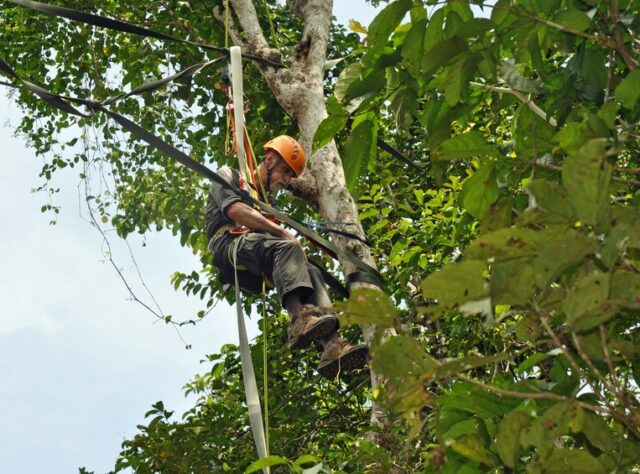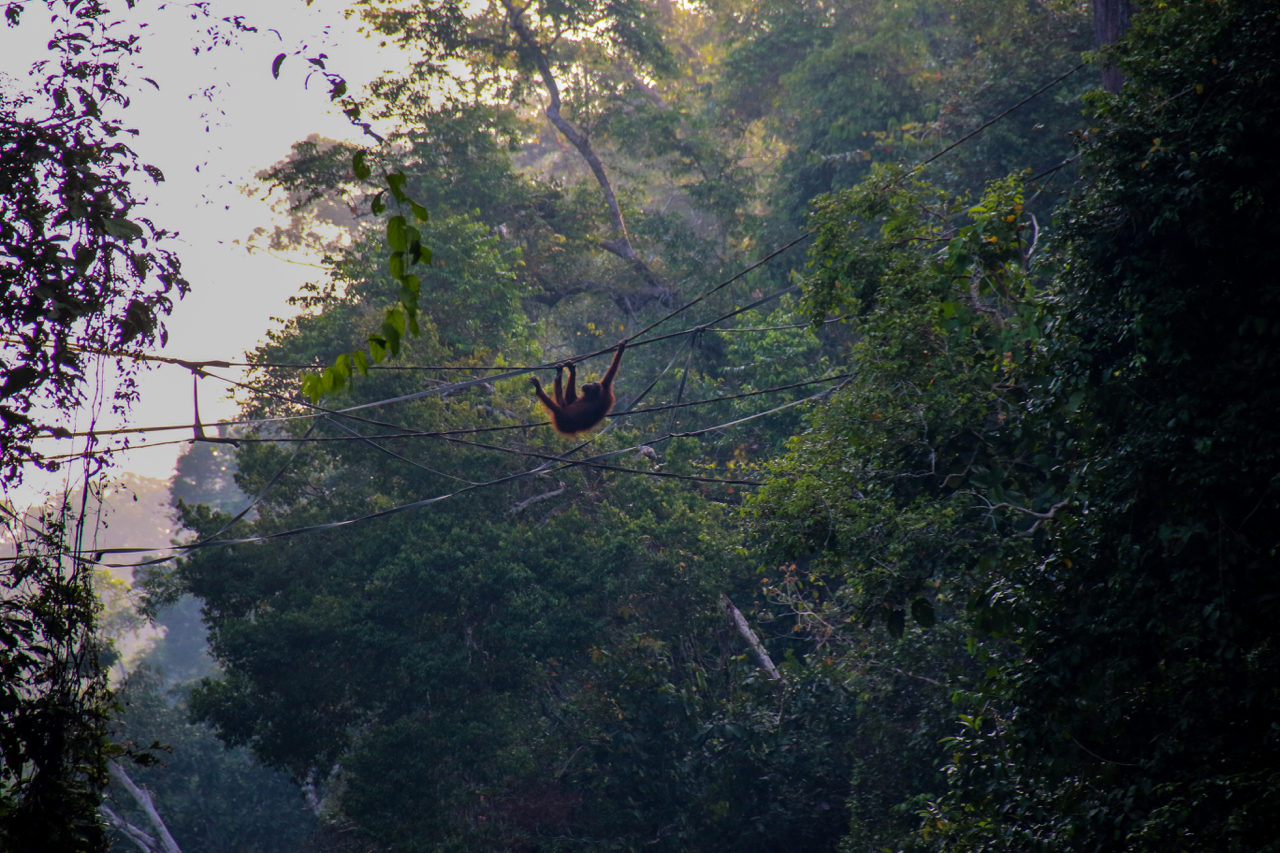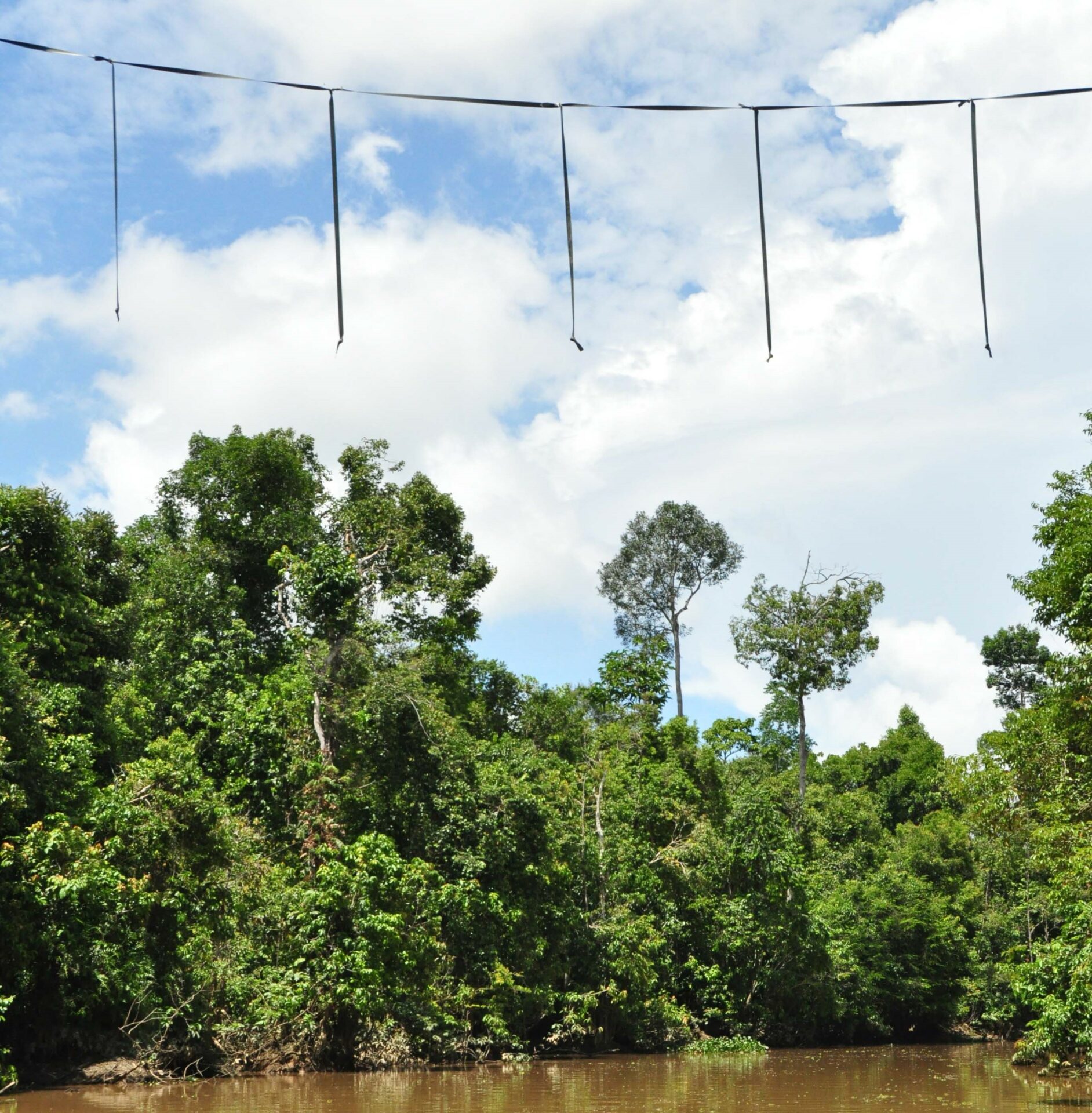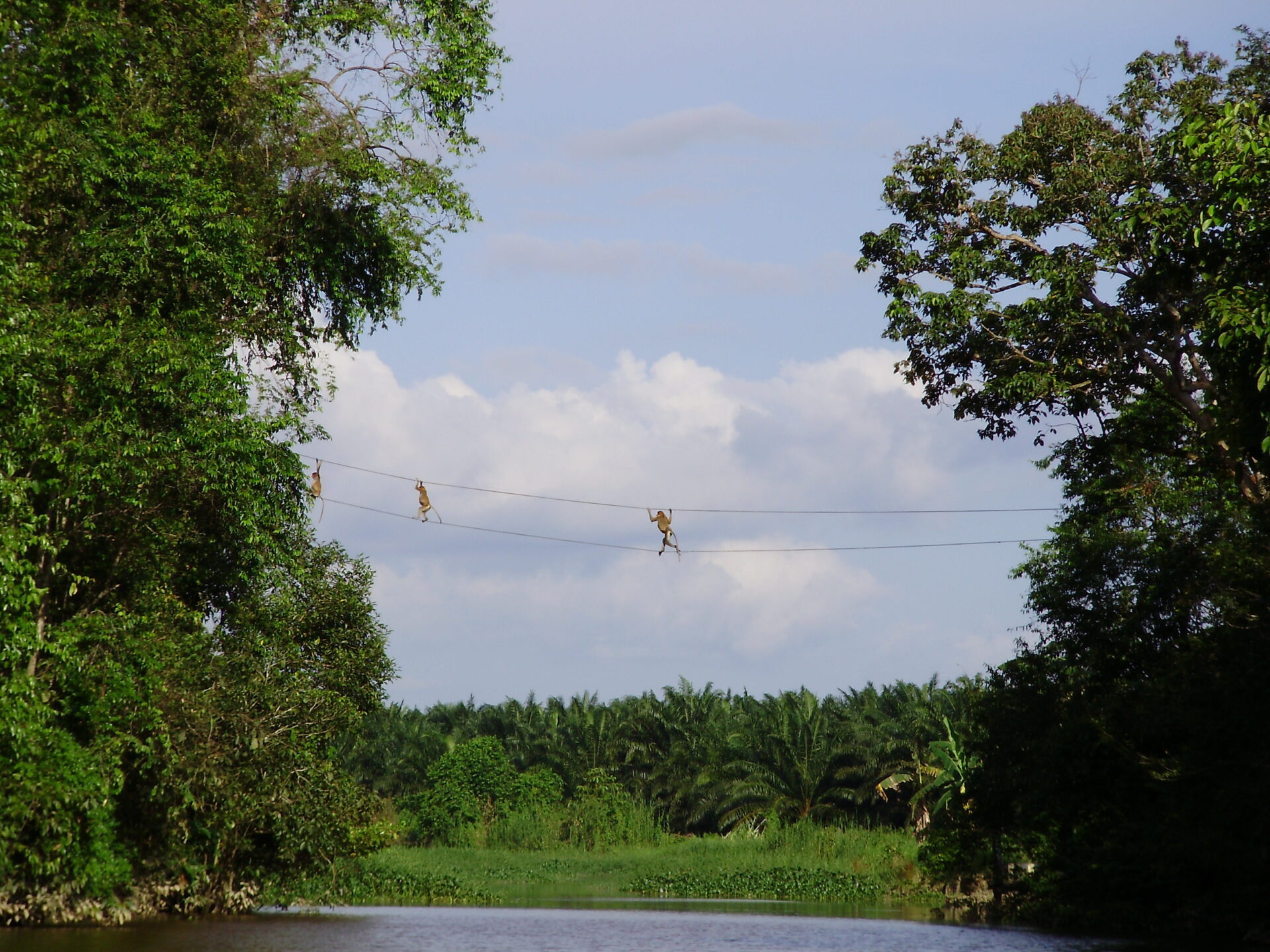
Securing an artificial canopy bridge to an anchor tree. Credit: Felicity Oram
In northern Borneo, our partner HUTAN has a very creative solution to the problem of habitat fragmentation. By creating artificial canopy bridges, they are helping reconnect populations of Bornean Orangutan (Pongo pygmaeus) and other wildlife, including Southern Pig-tailed Macaques (Macaca nemestrina), Long-tailed Macaques (Macaca fascicularis), and Proboscis Monkeys (Nasalis larvatus).
Orangutans cannot swim. In the past, this was not an issue. When encountering a river, young males, dispersing from their birth sites, would simply use overhanging trees to get across. However, many such natural canopy bridges have disappeared as riverside trees have been cut down. This threatens the survival of the Bornean Orangutan, a Critically Endangered species, by preventing the dispersal of young males and so increasing the risk of inbreeding.
While the long-term solution to this is to let riverbank trees regrow, this will take many years. In the meantime, a more immediate and “hands-on” solution is needed. This is why, in the early 2000s, our partner HUTAN set their sights on making their own canopy bridges, that could be strung across rivers and streams wherever needed. Since then, they have trialled many different materials and designs, and sought the advice of experienced zookeepers, all in service to finding the perfect Orangutan bridge.

An Orangutan crossing on one of HUTAN’s artificial bridges. Credit: HUTAN
Making the perfect Orangutan bridge
Initially, HUTAN began making their bridges from rope but found that these degrade rapidly in the tropical climate. From there, they moved to much heavier-duty materials, including metal chains housed in plastic hoses and fire hoses. However, although strong and robust, both were too heavy to handle in the forest canopy. An equally durable but lighter-weight alternative was clearly required.

An artificial bridge over the Teneggang River in Sabah. This is one of many different designs trialled by HUTAN. Credit: HUTAN
This alternative turned out to be webbing material. HUTAN came across this while visiting various zoos, including Chester Zoo, where it is used to make Orangutan enclosures more interesting. Lightweight, durable, and easy to attach to anchor trees, HUTAN had discovered the perfect material.

An example of HUTAN’s latest design, similar to a horizontal ladder, allowing Orangutans to travel from an oil palm plantation and into forest. Credit: HUTAN
Huge success so far
Since 2010, HUTAN has built 12 of these bridges over the tributaries of the Kinabatangan River, and their steadfast dedication to finding the right materials and design has really paid off. Camera trap footage reveals that Orangutans frequently utilise these bridges.
They have also been utilised by many other species, including Pig-tailed and Long-tailed Macaques. Highly exploratory, these were in fact the first to brave this new structure. Indeed, when the camera traps were first installed, there were 19,000 triggers over 12 months, most of which were Macaques taking selfies. Proboscis Monkeys also frequently use these bridges, showing the fantastic and widespread impact of this simple yet ingenious solution.

Proboscis monkeys crossing on a ‘two-line‘ bridge. Credit: HUTAN
A more connected future
This is an inspiring example of HUTAN’s broader efforts to secure and protect the very precious and threatened habitats present in the Kinabatangan region. Together, their work and their collaboration with other NGO’s and stakeholders is helping to secure a bright future not only for Orangutans but also this area as a whole. To learn more about our partner HUTAN, they have released a fantastic film Bridges to the Forest.

